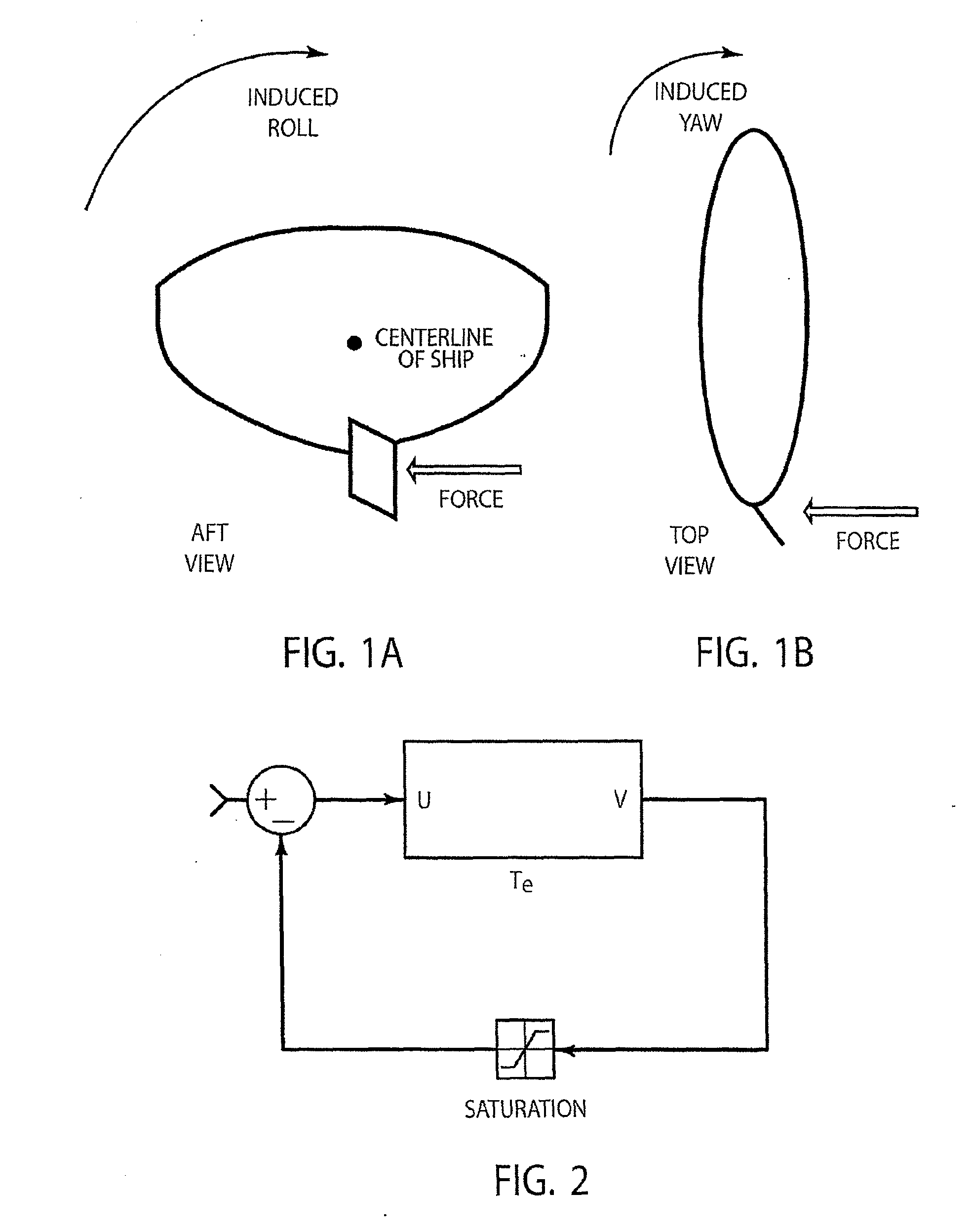Rudder roll stabilization by nonlinear dynamic compensation
a nonlinear dynamic compensation and roll stabilization technology, applied in the direction of special-purpose vessels, vessel movement reduction by foils, instruments, etc., can solve the problems of reduced crew effectiveness, cargo damage, and movement on the roll axis of a ship that can have several detrimental effects, so as to prevent unstable filter conditions, maintain stability, and reduce the performance of steering mechanisms
- Summary
- Abstract
- Description
- Claims
- Application Information
AI Technical Summary
Benefits of technology
Problems solved by technology
Method used
Image
Examples
example
[0035]An embodiment of rudder roll stabilizer, 10, of the present invention is shown in FIG. 6 hereof. The blocks outside steering mechanism controller group, 12, are components of the heading controller / roll stabilizer. Steering mechanism 12 illustrates a simplified mathematical model of a rudder control loop. Rudder angle, 13, is limited in angle by limiter, 14, and the hydraulic steering machine is limited in rate by limiter, 16, the effects of which are modeled as saturations (rudder limiter and rudder rate limiter, respectively). These saturations limit performance and potentially threaten the stability of the feedback system. In the analysis set forth hereinabove, the angle limit was chosen to be 35° / s, and as stated, three rate limits were considered (10° / s, 15° / s, and 20° / s). The limiters are specifically designed using identified vessel dynamics and rudder characteristics. The following describes the function of the multi-feedback-path nonlinear dynamic compensator shown in...
PUM
 Login to View More
Login to View More Abstract
Description
Claims
Application Information
 Login to View More
Login to View More - R&D
- Intellectual Property
- Life Sciences
- Materials
- Tech Scout
- Unparalleled Data Quality
- Higher Quality Content
- 60% Fewer Hallucinations
Browse by: Latest US Patents, China's latest patents, Technical Efficacy Thesaurus, Application Domain, Technology Topic, Popular Technical Reports.
© 2025 PatSnap. All rights reserved.Legal|Privacy policy|Modern Slavery Act Transparency Statement|Sitemap|About US| Contact US: help@patsnap.com



